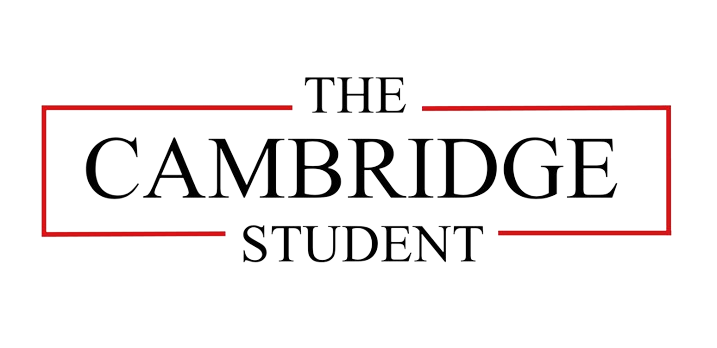World Gone Gay
Following the release of the census data, in the first instalment of her column this term, Kitty Ford examines queer experiences in the UK.
Recently, in conversation with my brother about the inhabitants of my friendship group, I realised I had created quite the echo chamber for myself. Only one identifies as heterosexual (and this has been questioned periodically). While I speculated that this could be due to subconscious, or indeed perhaps conscious, selection, I found that I also had friends in the facts. A Washington Post article printed last year states that “1 in 6 Gen Z Adults are LGBT. And this number could continue to grow”. Dum Dum DUMMMM. Such a growth was also confirmed in the recent 2021 census here in the UK. Just over 3% of people declared themselves to be not heterosexual: an estimated doubling in number since 2014.
Okay, such data suggests maybe somewhat selective behaviour from me- but one question still tugs at me- why is this happening?
In my valiant quest for answers in the news (read: the Opinion section of the Guardian), I found Owen Jones’ argument that this increase is due to an “increased social acceptance” which has allowed gay people to “realise their authentic selves”. This phenomenon is therefore supposedly conditional on a ‘social acceptance’ that is geographically identifiable. Poke at the ‘Sexual orientation’ contingent of the census - termed aptly by my girlfriend ‘the gay map’ - and you will swiftly notice a change in colour as you approach the names of locations such as ‘Manchester’, or ‘London’. Cambridge too, grows increasingly dark in the strange shade of blue/green that the ONS has chosen the closer you get to the centre. It has long been recognised that urban spaces provide a sense of possibility and acceptance, and harbour communities of designated alterity. The migration of queer youth from provincial to metropolitan is culturally classic, and something I dreamt of often as a juvenile lesbian, confined to my childhood bedroom in a national lockdown in the rural westcountry.
So why are the gays so drawn to cities? Despite what many believe, cities are not occupied entirely by the wokerati. Nationally, 23% of people think homosexuality to be ‘unacceptable’. In London, this number rises to 28%. Perhaps, then, it’s not about safety but facilitated divergence. Urban environments consist of the perpetual novel, and thus it feels somewhat unsurprising that a community so associated with unfamiliarity and ‘difference’ finds home there. However, queer ‘lifestyles’ and experiences are not chosen alternatives; they are ordained as such. Heteronormativity assigns us this irregularity; we have no choice but to be different.
With queer people increasingly visible within the media, alarmingly many people are beginning to dismiss this ‘trend’ as resulting entirely from a desire to be ‘trendy’. But clearly, this difference-read-as-some-kind-of-deliberate-’edginess’ is a position which all queer people have been ascribed, not willingly selected. This reduction of queer identity and expression as being just an attempt at edginess overlooks the historical process that has created these deviations from norms. Suggesting that people are doing this to accumulate some ‘social points’ deprives power from queer expression and experience, and is a deeply harmful narrative.
I think some of this permeates the queer community too. Before coming to Cambridge, I’d never really encountered the negative tropes surrounding ‘bi girlies’. Having just cut off my hair and becoming immediately identifiable as queer, I entered a space where I was ‘cautioned’ to the phenomenon of “hypothetical bisexuality”. There seemed to be a mistrust directed towards some people identifying as non-heterosexual, presumably because of their perceived superficial desire to exist in queer spaces, rather than their genuine, ‘practical’ sexual orientation. While being cruelly misrepresentative of the bisexual community, I think such derisions can be seen as a potentially misguided articulation of a genuine discomfort from those that feel their experience and identity is being capitalised upon.
This is not without basis: where steps have been made in LGBTQIA+ rights, gargantuan leaps have been taken in corporate marketing response. Rainbow washing attests to a literal capitalising (‘capitalism-ising’, if you will) of queer identity and experience for profit. Pride Month now offers an opportunity for companies to slap some colour on whichever product they are mercilessly pushing the general public to consume, rack the price up a little bit (naturally) and then take to Instagram to virtually chant “We stand with you, LGBTQ!” The moment midnight hits on June 30th, it’s business-as-bloody-heteronormative-usual, and all promises of donations to LGBTQ+ organisations are forgotten.
The notion that gays are on the up because of an association of homosexuality with being ‘cool’ seems to me, once again, to be a construct built along straight lines, and not the conclusion anyone should reach having examined census data. There exists a false synonymy between public identification and personal orientation. Just because more of us can say who we really are doesn’t prove the existence of a rampaging bandwagon.

